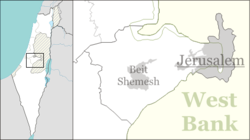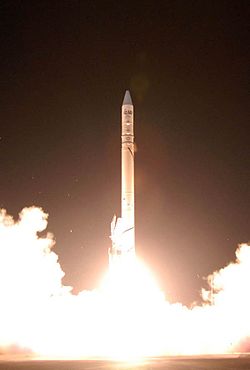| Sdot Micha Israeli Air Force Base Air Wing 2 | |
|---|---|
שדות מיכה | |
| Sdot Micha, Jerusalem District in Israel | |
 | |
| Site information | |
| Type | Military missile base |
| Owner | Israel Defense Forces |
| Operator | Israeli Air Force |
| Location | |
| Coordinates | 31°44′19″N34°55′10″E / 31.73861°N 34.91944°E |
| Site history | |
| Built | 1962 |
| In use | 1962 – present |
Sdot Micha Airbase (in Hebrew: שדות מיכה, lit. Micha Fields) is an Israeli Air Force (IAF) missile base and depot, whose existence Israel neither confirms nor denies. It is situated in the center of Israel, halfway from Jerusalem to the Mediterranean Sea and extends nearly 13 km from southeast to northwest. The center of the base is located 1.5 km north of moshav Sdot Micha and it has neither a runway nor a visible heliport. Its facilities can now be clearly seen on satellite images. Nuclear warheads are supposed to be stored at the base, that can be fired from mobile missiles stationed in caverns there. [1]












